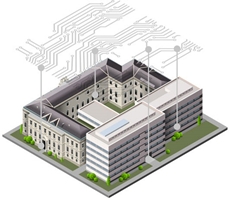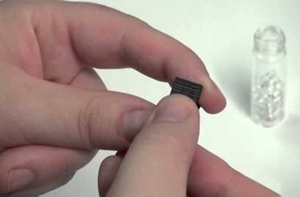Cyber security tool, cellphone microscopes get to work
03 Feb 2017
A tool to assess and address cyber and physical security issues and an inexpensive way to create a microscope out of a cell phone are being used by businesses and individuals, thanks to teams who worked to move them out of the laboratory and into the marketplace.
 | |
| PACRAT is the only vulnerability assessment tool on the market that blends cyber and physical security to identify issues in today's interconnected systems. |
The technologies were developed at the Department of Energy's Pacific Northwest National Laboratory,(PNNL), which then went beyond standard efforts to find a partner interested in licensing the analysis tool or, in the case of the smartphone microscope, made the design freely available to the public.
The Federal Laboratory Consortium (FLC) annually recognizes federal laboratory teams and their industry partners for outstanding technology transfer achievements.
"Every year, millions of American taxpayer dollars go to fund research and development at PNNL," said Rosemarie Truman, PNNL's director of innovation impact. "Our goal is to maximise the impact of our inventions by using novel paradigms to move inventions to market and thereby boosting US industrial competitiveness."
PNNL has earned 85 FLC awards since the awards program was established in 1984 - far more than any other national laboratory. The 2017 award winners are for:
 | |
| The smartphone microscope team includes Rebecca Erikson, Janine Hutchison, Josef Christ, Ron Thomas, Derek Maughan, and Gary Spanner; former PNNL staff member Cameron Hohimer; and Plastic Inspection Molding's Ken Williams. |
Cyber and physical attacks - preventing a one, two punch
You've seen it in a movie - a tech savvy geek with a laptop hacks into a bank's security system, allowing a stealthy intruder to slip through the back door undetected. The thief places a device that gives the hacker access to the vault. Exploiting both cyber and physical security at once is a common trope for heist and spy movies, but in the real world, these types of attacks could cause black outs, identity theft, data breaches and more.
Researchers at PNNL developed a tool that can help prevent these attacks, called the Physical and Cyber Risk Analysis Tool, or PACRAT.
PACRAT discovers potential vulnerabilities by analysing how cyber and physical systems affect each other, identifying vulnerabilities not found by looking at the systems independently. The software analyses every potential pathway for a breach and discovers elements that are commonly exploited in successful attacks. PACRAT can then prioritize security upgrades based on its analysis.
The software was licensed to Albuquerque-based RhinoCorps Ltd Co in March 2016, after being demonstrated to potential industry and government licensees through the Department of Homeland Security's Transition to Practice Program. RhinoCorps is integrating the tool into a platform for federal and commercial customers to evaluate cyber and physical security risks.
 | |
| The smartphone microscope team includes Rebecca Erikson, Janine Hutchison, Josef Christ, Ron Thomas, Derek Maughan, and Gary Spanner; former PNNL staff member Cameron Hohimer; and Plastic Inspection Molding's Ken Williams |
A microscope in your pocket
PNNL's smartphone microscope is a sleek, simple, and inexpensive way to turn a smartphone into a cost-effective, portable, and powerful microscope - allowing anyone with a smartphone to explore the world's tiniest objects. A glass bead in a plastic housing converts the nearly ubiquitous camera phone into microscope that magnifies a specimen or other item of interest either 100 or 350 times. Originally part of an effort to develop a tool to quickly identify biological materials in the field, a unique decision by the inventors and PNNL's commercialization staff made the microscope available at no cost to the general public via a free, downloadable 3D printer design.
Not counting the cost of the printer, a microscope can be printed for pennies. The inventors have volunteered countless hours fielding inquiries, demonstrating use, and printing the device for students and others. The decision to provide the technology design at no cost cut months - even years - from the transfer process and has enabled scientists and students everywhere to easily access it for field or classroom use.
The 2017 awards will be presented 26 April in San Antonio, Texas, at the consortium's annual meeting.













.jpg)






.jpg)









